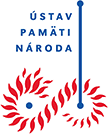Martin Garek: State Catholic Action in Kysuce region – revolts and riots in 1949
Communist power perceived the Catholic Church as its main ideological internal enemy. Since the February coup d'etat in 1948, it had attempted to get the Catholic church subordinated to the political leadership in Czechoslovakia. Observing the resistance of the episcopacy and the Holy See against its efforts, the Communist power gradually started to use more radical interventions against the Catholic Church. The established organisation called Catholic Action was taken over and used for political power: to separate people above all from the higher church dignitaries. Catholic Action represented subversive activities of Communist leaders striving to separate believers from their priests and the church hierarchy and to establish a 'national church'. In 1949, the Catholic Action led to many riots, representing the most effective form of resistance against the Communist power. Some of those riots were even classified as revolts. To a certain extent, the north of Slovakia was a specific case, as even Communist officials themselves labelled local people as bigoted, protesting against communist ideas and being loyal to their priests and the church hierarchy. Riots connected to that so-called Catholic Action started in June 1949 in Raková and Čadca, and they went on also in other parishes until late autumn. The revolt in Čadca frightened the communist leadership as the workers who were supposed to be the backbone of the regime revolted. Therefore, this case was handled by the highest organs and many real or alleged participants in the revolt were persecuted. Despite the communists' punishments, believers were willing to fight for their faith and persist in it as was requested by the church hierarchy in Czechoslovakia and instructions from the Vatican. It was the attitude of people that led to the situation that the Communist power dropped the Catholic Action in Czechoslovakia and started to use other forms of persecuting priests and believers.

Updated at: 22.09.2023
Print Tweet